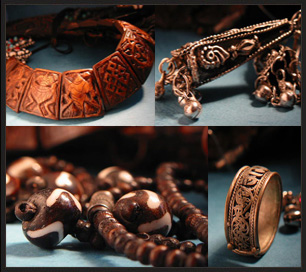|
Tibet Artwork, Tibetan Silver Jewelry , Tibetan Jewelry, Tibet Jewelry, Jewelry from Tibet, Tibetan Buddhist Jewelry, Tibetan Turquoise Jewelry, Tibetan Jewelery
Tibet Artwork, Tibetan Silver Jewelry , Tibetan Jewelry, Tibet Jewelry, Jewelry from Tibet, Tibetan Buddhist Jewelry, Tibetan Turquoise Jewelry, Tibetan Jewelery, Buddhist Jewelry
|
Green also denotes youthful vigor and activity, and the Green Tara is always shown as a young girl having a mischievous and playful nature.
The Buddhist Lord of karma (action), Amoghasiddhi, is also associated with this color, reiterating that green in Buddhist thought is the color of action.
|
Buddhist Symbols
In the earliest centuries of Buddhism, statues of the Buddha were not used. Instead, Buddhist art consisted of images symbolizing the Buddha and his teachings, such as the lotus, the Wheel of the Law, the Bodhi tree and the Buddha's footprints.
Eventually, the Buddha image became one of the most popular representations in Buddhism, but these early symbols remain important and are frequently used to this day. They are especially important in Theravada Buddhist countries like Sri Lanka and Thailand.
As Buddhism spread, Buddhist symbolism was enriched by the cultures it came into contact with. This is especially true of Buddhism in Tibet, which has developed a rich symbolic tradition. The central symbols of Tibetan Buddhism are the Eight Auspicious Symbols, known in Sanskrit as Ashtamangala (ashta meaning eight and mangala meaning auspicious). The Eight Auspicious Symbols are printed on Tibetan prayer flags, incorporated into mandalas and thangkas, and used in other forms of ritual art. Another important symbol is the Wheel of Life, a symbolic representation of the universe as understood by Tibetan Buddhists.
Other important types of symbolism in Buddhism include colors, especially the five colors of white, yellow, red, blue and green, and symbolic hand gestures called mudras. The articles in this section explore these Buddhist symbols, providing information on their history, meaning and use in Buddhism today. (For an introduction and quick guide to Buddhist colors, see our Chart of Buddhist Color Symbolism.)
|
|




添加新评论